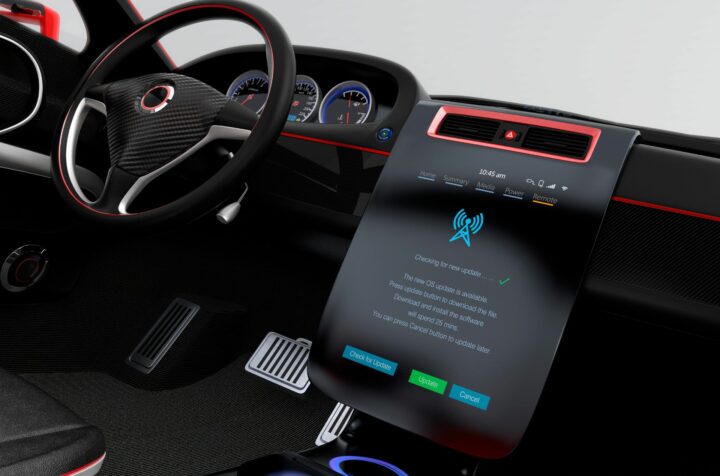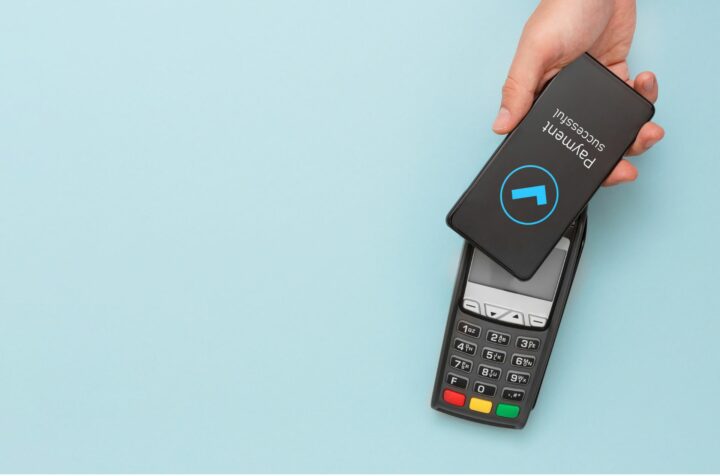Although multibanking apps are no longer new to the market, they still offer a great deal of opportunity for adding new functions and improving user-friendliness.
In addition, in this area especially, banks are facing more and more competitors such as fintech solutions and foreign providers – not least thanks to the corresponding regulations in the wake of the PSD2 ordinance.
These circumstances are forcing banks to rethink – because customer expectations have also changed.
“A new wave of disruption more forceful and more pervasive than what we have seen in recent years will likely unfold in the next decade. With this disruption, though, comes endless opportunity.
These forces may also change how banking is done. Banking will be more open, transparent, real-time, intelligent, tailored, secure, seamless, and deeply integrated into consumers’ lives and institutional clients’ operations.”
From Deloitte’s “2020 banking and capital markets outlook”
What do these changes mean in concrete terms for banks – for example in the development of a multibanking app? What does such an app need to offer in order to be successful? How do you ensure that it doesn’t get lost in the sea of existing apps?
Together with our experts for the banking and finance industry, we’ve created a guide with the most important points.
#1 Meeting customer expectations
First of all, it’s essential to find out what future customers expect from a multibanking app. What are absolute must-haves and what are features that might not be needed right from the start?
A market analysis is also absolutely necessary – which features are already available and where can we stand out from the competitors with our product and customer experience?
We have compiled a few tips of absolute must-haves for multibanking apps here:
- Overview of all account balances and compatibility with own accounts
- Overview of credit and bank cards
- Ability to make transfers on the go
- Setup of standing orders and date transfers
- Preparation of financial plans to save money
- Create budgets to manage your own expenses
- Security through modern data encryption
It doesn’t matter whether it’s an independent multibanking app, such as that of N26, Revolut, Tink, or an app developed by a bank, such as that of HSBC or Barclays.
Therefore, it makes sense to have your considerations checked, already in the first step, by your future target group with the help of a competitor analysis and later with a prototype evaluation. In this way, you can make sure that important features aren’t missing and you can check your ideas for additional features to see if they gain acceptance within your target group.
By doing this, you’ll receive valuable feedback before the development process even begins, which, consequently, will help you develop a product that really meets the needs of your target group.
As soon as it’s clear which features are to be integrated, you can start development. Now it’s not only about integrating the right features but above all about making sure that they work without errors. A series of QA tests will help you do this. Even the best feature is useless if it doesn’t work.
If you want to learn more about how bugs not only harm your app but even your brand, read our blog post about it: Bugs Kill Trust & Revenue: Bug Tests in the Financial and Banking Industry
However, quality assurance isn’t the only crucial point in the development of your multibanking app – the customer experience should never be neglected.
#2 Perfecting UX
Let’s take the registration process of your multibanking app as an example.
You’ve tested it extensively for bugs and you’re sure that it runs without errors on all devices, operating systems, and software versions.
Nevertheless, it could happen that your users don’t complete the registration process. What could be the reason for this? The answer is obvious: the process is bug-free but not UX-optimized.
Common examples would be application forms with numerous fields that are difficult to handle on a smartphone or mandatory information that the user has to painstakingly search for in his documents. Or, or, or – the list could go on forever. After all, even additional functions that the user doesn’t understand or can’t even find are quickly rendered meaningless by lacking usability, even if they (theoretically) work without any errors.
“Regardless of business fundamentals, banking consumers around the world want the same thing: superior and consistent customer experience in branches, online, or via a mobile app. But delivering on this expectation is still challenging for many banks, despite their recent digitization efforts.”
From Deloitte’s “2020 banking and capital markets outlook”
The UX blog Built for Mars wrote about the experience of opening bank accounts on 12 different platforms. They compared the onboarding processes of different traditional banks with those of so-called challenger banks.
The summary shows that: “The challenger banks were significantly quicker (in days) and required less effort (in clicks) to get an active account.”
The most impressive part of this analysis is probably the number of clicks needed to open an account. It only took 24 clicks to open an account at the quickest challenger bank, but it took a massive 120 clicks to open an account at one of the traditional banks. There are also traditional banks where fewer clicks are needed, but in general, opening an account with a challenger bank was quicker and easier than with traditional banks.
The ease-of-use of the challenger banks was not only a result of fewer clicks being needed but was especially attributed to the fact that opening an account was handled entirely in the app. For most traditional banks the customer was directed to the website and sometimes a paper form even needed to be filled out and sent to the bank, which obviously makes opening an account more difficult and time-consuming.
Therefore, in addition to bug testing, UX and usability testing play a decisive role in the development of a successful multibanking app and get feedback on the whole user experience not only the functional part of it.
Even during the development phase, a usability and UX study can already provide valuable insights about the expectations of your users and any problems they may encounter when using your application. Combined with remote usability videos, you can even observe how testers use your application and where they “stumble”. If necessary, you can also ask direct questions and gain a deep understanding of and unbiased feedback from your target group.
Do you want to learn more about crowdtesting digital processes in the banking and finance industry? Then take a look at the recording of our webinar with msg systems on the subject of banking and insurance in the digital world (webinar was held in German).
You can also contact us directly, we’ll develop a test concept together with you, adapted to your needs.
Are QA and UX old news for you? Then read the second part of our article to find out which trends and developments you shouldn’t ignore:
Make your Multibanking App a Success – Part 2
Share it if you like it:
Tag Cloud
About the author
Carl is our expert for the finance, banking, and insurance industry.
Categories
Links
Rate this post
Other content that might be interesting for you:








